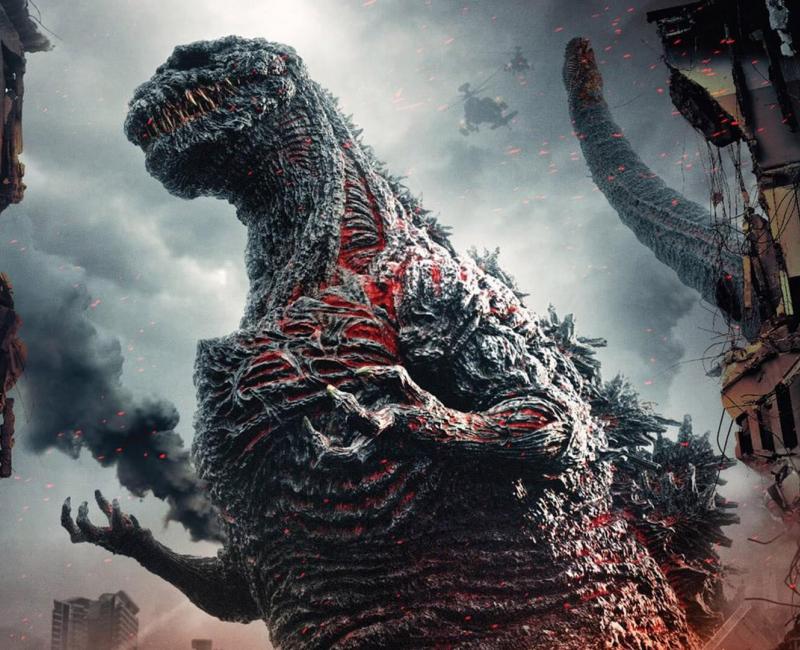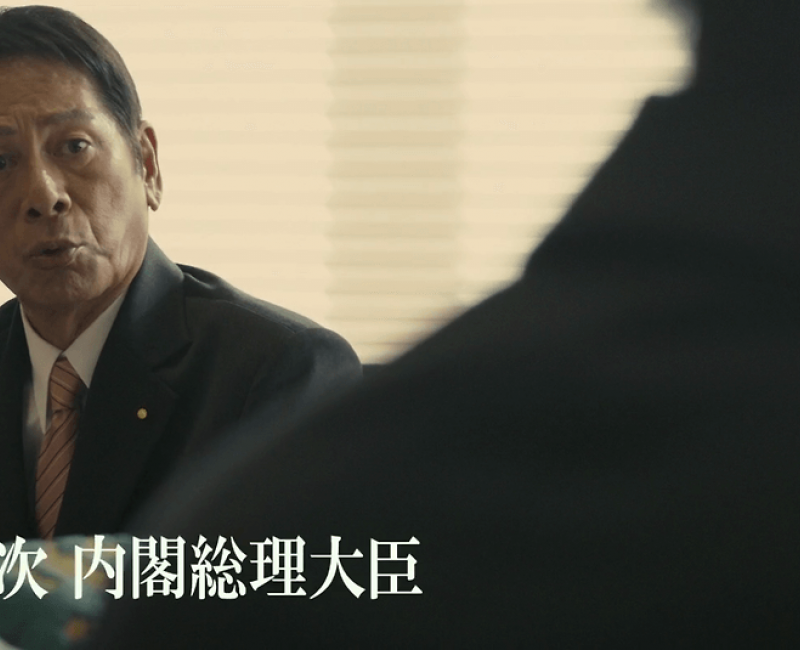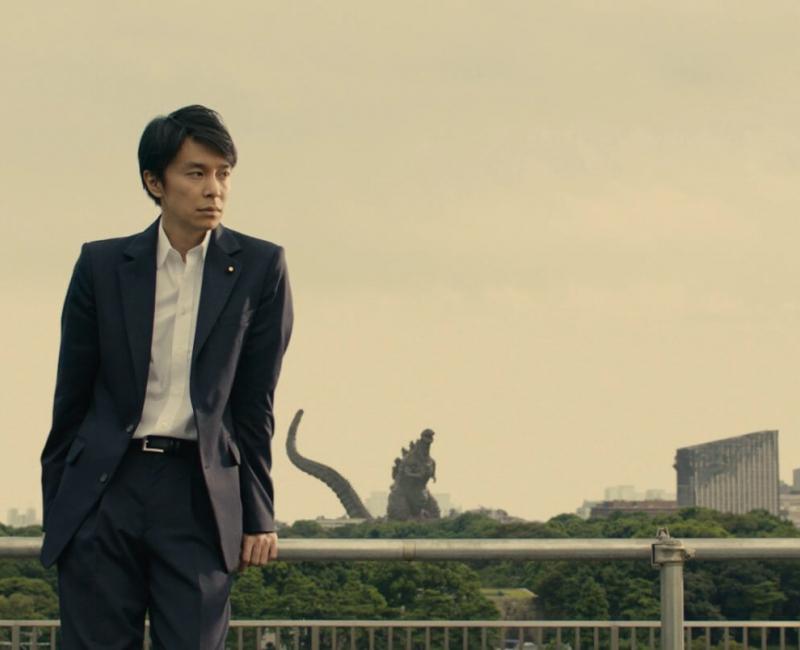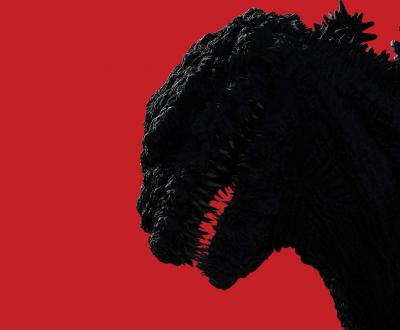Shin-Godzilla: A fascinating Foreshadowing of Japan's Covid Crisis Response
Warning: this article contains major spoilers of the movie Shin-Godzilla released in 2016. Make sure to watch the movie before reading, or feel free to continue if spoilers are not a concern.

The movie in context: Godzilla Resurgence
Shin-Godzilla is the 29th Japanese opus of the Gojira movie series, initiated in 1954. It was directed by Hideaki Anno (filmmaker and animator, and above all the genius creator of Neon Genesis Evangelion among other things) and his long-standing colleague Shinji Higuchi. Two underlying ideas support the film:
- First, it is naturally a reboot of the franchise and a tribute to its 62 years-long history, especially to the first movies that were very different from the recent Hollywood blockbusters solely for entertainment (it is by the way one of the rare movies in which Godzilla does not fight another kaiju monster),
- It is also a criticism of the Japanese government's crisis management, a subject that we are particularly interested in.
As a matter of fact, Godzilla Resurgence (from its international title) lampoons the way the Japanese government dealt with the consequences of March 2011 Great Tohoku Earthquake. It is also a surprisingly accurate foreshadowing of Abe and Suga governments’ responses to the Coronavirus 🦠, with a repetition of history and the difficulties of the successive administrations to learn from their mistakes. One year after the beginning of the pandemics, it offers an interesting prism and draw parallels we will develop below (in the same manner as manga such as One Piece or Akira have done in their portraying of the elites).
The movie is a wonder of cinema, totally mesmerizing for the spectator. It is staged in a particular way for a monster movie, with only 3 confrontation scenes sequencing indoor conversations: mainly long and precise administrative lines, rhythmed by a traditional soundtrack and percussions directly borrowed from Eva. The movie succeeds in not annoying the spectator thanks to well-written dialogs, and cynic and incredible conciseness.
The giant lizard is a rigid and cold monster, a force of nature embodying the natural disaster. It is incidentally described in the movie as the ultimate organism, almost a godlike creature (the title’s "shin" written in katakana can be understood either as "new" or "god") as its power is overwhelming. In that respect, the movie somehow revisits Godzilla’s origins: it was born from the radiations generated by the atomic bombings at the end of WWII, whereas, without saying it explicitly (even though the press conference setting is a clear reference to it), Shin-Godzilla originates from the smoldering remains of Fukushima Nuclear Power Plant.
If you have not seen Shin-Godzilla yet, watch the trailer and take 2 hours to enjoy this masterpiece of Japanese cinema:
A slow and coy response, and the inability to plan for the future
During its incredible first forty-five minutes, Shin-Godzilla delivers an incisive and sharp criticism that will set the tone for the rest of the movie. This first part (and the second one in a mirroring effect) pictures the incredulity facing the event, and spineless and coward decisions.
Godzilla’s first appearance in Tokyo is compelling: it takes 5 successive meetings, some of which only at a different floor, before a first press conference is held and broadcasts lies that will be contradicted in the next one. The signs of a sclerosed bureaucracy from another age (with frightening links to reality) are:
- The Prime Minister, tetanized and unable to take responsibility, and who is only capable of voicing decisions made by others,
- His closest executive advisers are elderly persons, wise but not prompt to move or to use flexibility,
- Only one woman is a minister, and the unique representant of her genre among dozens of men in the decision-making roster,
- The primary goal is only to soothe the public, even with a mere announcement, but not to act and face a threat that is expected to vanish by itself (an astounding example of self-persuasion method),
- The most important decisions are delayed and even avoided in fear of future negative consequences for the politicians, either on their reputation or on their position in the political game,
- The elites’ inaction, in terror of collateral damages, leads to a human and economic disaster: to protect 2 passersby in a 40 million inhabitant’s city the Self Defense Forces are asked not to attack Godzilla, allowing it to reach its "final" form and spit its atomic breath over the capital.
In fairness to the Japanese government, the country’s constitution allows little room of maneuver to manage Covid-19 since early 2020: there is no possibility to enforce a lockdown, and the state of emergency is symbolic and relies heavily on the citizens’ behavior as it essentially consists of smokescreens rather than solid prevention measures to avoid the spreading of the virus (as proves spring 🌸 2021's 4th wave). However, Japan made decisions surprisingly late: when the closure of its borders was announced in late 2020, more than 2 months after the beginning of the epidemic on the Japanese territory and the outburst on Diamond Princess cruise ship, more than 50 countries had already entered in lockdown to tackle the uncontrolled situation!

In hindsight, the decisions’ sequence sent shiver down the spine:
- The decision to postpone the Tokyo 2020 Olympic Games 🏅, reluctantly made as some important delegations announced their athletes’ withdrawal. More recently, the decision to stage the games without overseas spectators was made with a frightened monitoring of opinion surveys.
- When the borders finally reopened to foreign residents after 5 months of inhuman closure, incoming travelers were asked not to use public transportation or to self-quarantine for 14 days. In reality, no efficient control was implemented and anyone, even Japanese residents, did what they wanted, at the risk of an oblivious spreading of the virus.
- Additionally, it took one year to supply the general public with affordable PCR tests. Their cost previously amounted up to ¥40,000 (~US$255.90), and their prescription by a doctor or physician was an uphill battle. Japan persisted in its head in the sand policy regarding the contamination statistics, and it is still true now, although to a lesser extent. The patients’ management has always been insufficient, especially at physicians and hospitals regarding screening, and many clinics refused ambulances with heavily affected patients.
- The government never settled to close the restaurants (the public spaces where contamination is easiest), and contributed on the contrary to the spreading of the virus via the domestic tourism stimulus, the inappropriate GoTo Travel campaign.
- Last episode to date: the vaccination fiasco. The incredible tardiness of the health agency (with a very slow re-validation of the vaccines) associated with the dependence to foreign countries (errors in the orders and delayed deliveries) lead to a critical delay that is impeding even more a difficult vaccination campaign (almost half of the numerous population in Japan is of elderly age) whereas in Western countries herd immunity is likely to be reached in early autumn 🍁.
A hope for Japan’s fight against Coronavirus?
In the end, it is the young rebels’ Japan lead by Yaguchi that succeeds in stopping Godzilla. In their first meeting, they stated that to be able to move forward in a state of emergency, they needed to think out of the box of the traditional Japanese hierarchy. It even showed in their use of Japanese language when the protagonists switched from formal politeness to the more direct and efficient neutral form.

Even if the real Japanese politicians have a hard time to anticipate their renewing, Hideaki Anno can not be accused of anti-patriotism; at most he prioritized the youth, when the fleeing old politicians’ helicopter 🚁 was erased by Godzilla’s laser. In the movie, success came from international cooperation, especially with France and Germany, whereas the United States never ceased to interfere or to wring the Japanese arm to serve their own interests, to the point of considering the destruction of Tokyo with a new atomic bomb.
The victory required an unheard-of flexibility in Japan and the cooperation of private and public sectors overcoming the stiffness of Japanese bureaucracy – a wishful thinking that is unlikely to happen in reality. As a matter of fact, the last shot of the movie is not that optimistic: under its hardened carcass, Godzilla’s nuclear heart continues its mutations… a scenario that we do not wish for the future in this never-ending Covid-19 pandemic.



